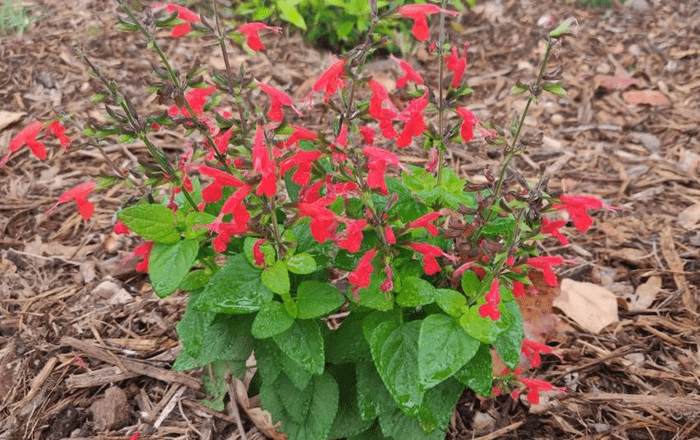
Salvia
Also commonly known as firecracker plant, this annual variety of salvia pops in any sunny garden, producing season-long color. Depending on the cultivar, this annual reaches 8 inches to 2 feet, though newer varieties are on the compact side.
Why we love it: Tons of nectar-rich tubular blooms cover the short or long stalks. These annuals that attract hummingbirds may be red, orange, white, blue, pink or purple.
Check out the top 10 salvias to grow for hummingbirds.
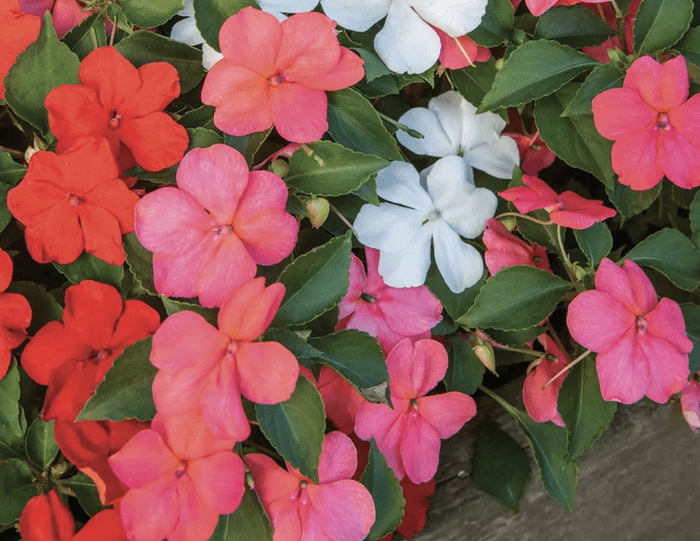
Impatiens
Invite winged creatures into your shady spaces with impatiens, which come in a rainbow of hues. Once planted, these annuals that attract hummingbirds don’t need much care. Even deadheading isn’t necessary! Avoid downy mildew with disease-resistant Beacon impatiens and New Guinea impatiens.
Why we love it: Reaching 6 inches to 2 feet high, it forms mounds, making it a good choice for borders and foundation beds, as well as containers.
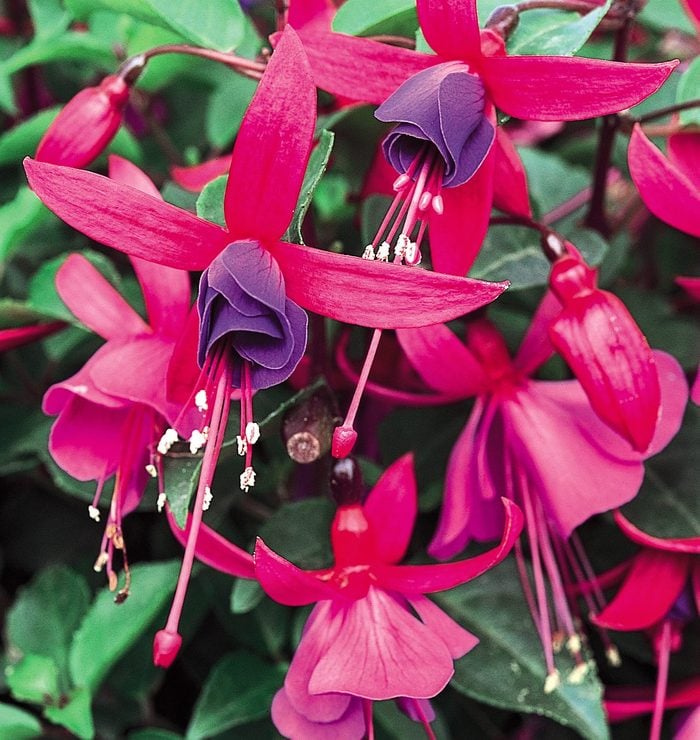
Fuchsia
These showy, pendulous blooms in red, white, pink and purple will capture your heart. There are more than 100 kinds, from low-growing dwarfs and trailing plants to upright shrubs. Fertilize weekly for best results.
Why we love it: Fuchsia grows best in moist soil and partial shade, so it’s ideal for attracting hummingbirds to shade.
These are the best perennials to grow for hummingbirds.
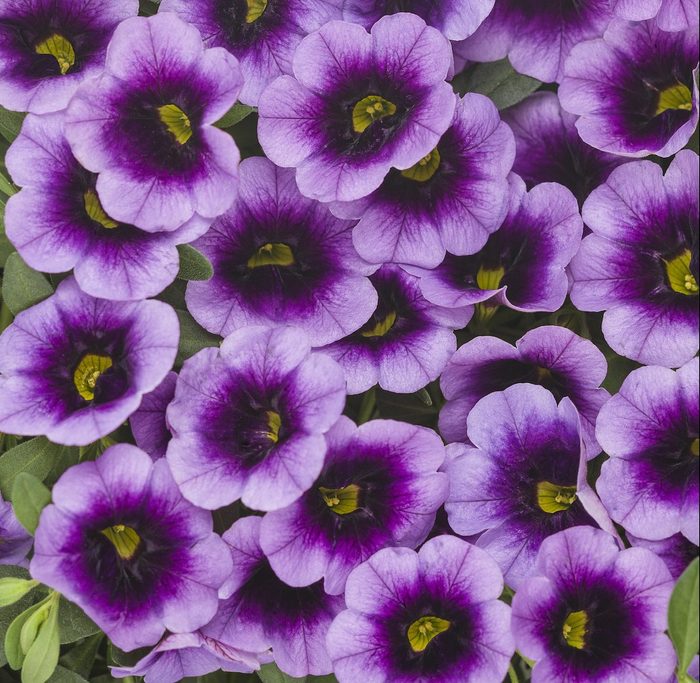
Calibrachoa
Small petunia-like flowers steal the show all season, making fast-growing calibrachoa a hot choice for beds and containers—especially those that are geared toward hummingbirds and butterflies. Use it as a nicely textured filler plant or as a bold stand-alone. Calibrachoa plants reach about 8 inches tall and spread out.
Why we love it: It’ll trail up to 16 inches before you know it, so use it as a fast-grower to quickly dress up a pot.
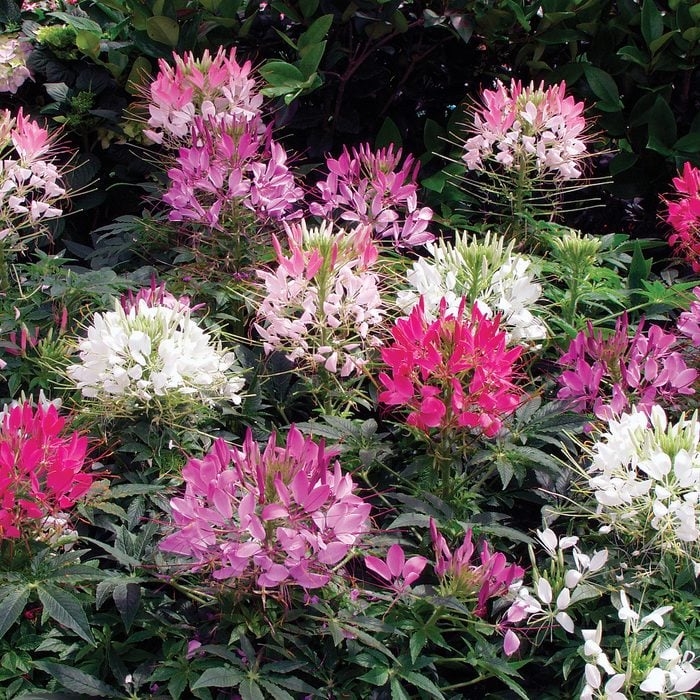
Cleome
Plant this tropical native in your garden and you’re sure to attract the attention of your favorite fliers. Cleome, which some call spider flower, is a top nectar source for swallowtail butterflies and hummingbirds.
Why we love it: Cleome’s tall stems topped by wispy pink, purple or white flowers are hard to miss. Plants tend to reseed themselves from one year to the next—if goldfinches don’t get to them first.
Discover more award-winning hummingbird flowers.
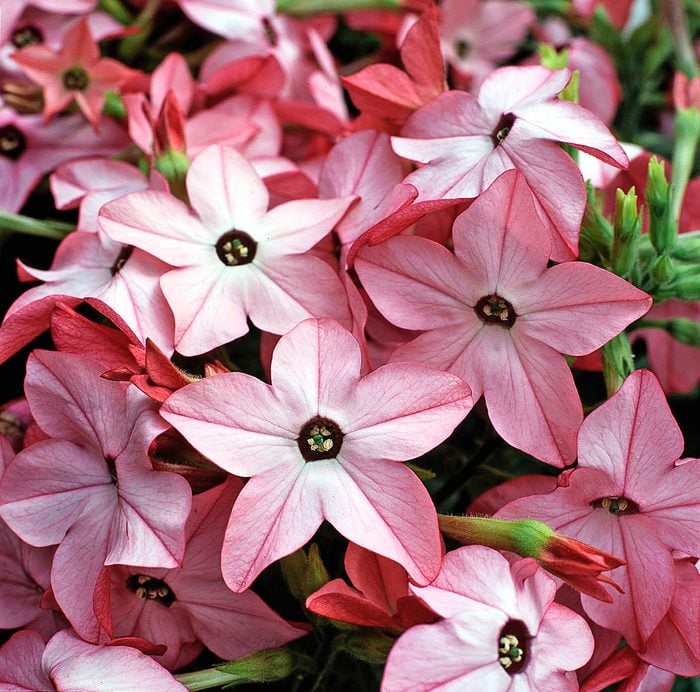
Flowering Tobacco
For a no-fuss way to liven up your garden, plant flowering tobacco. Ranging from 10 inches to 5 feet high, the stems are covered with star-shaped flowers in shades of red, maroon, lavender, white, pink, yellow and even green.
Why we love it: Some types, like N. sylvestris species, have a lovely scent in the evening. Grow these annuals that attract hummingbirds near a patio or entry so you can enjoy the fragrance.
Check out the top 10 red hummingbird flowers.
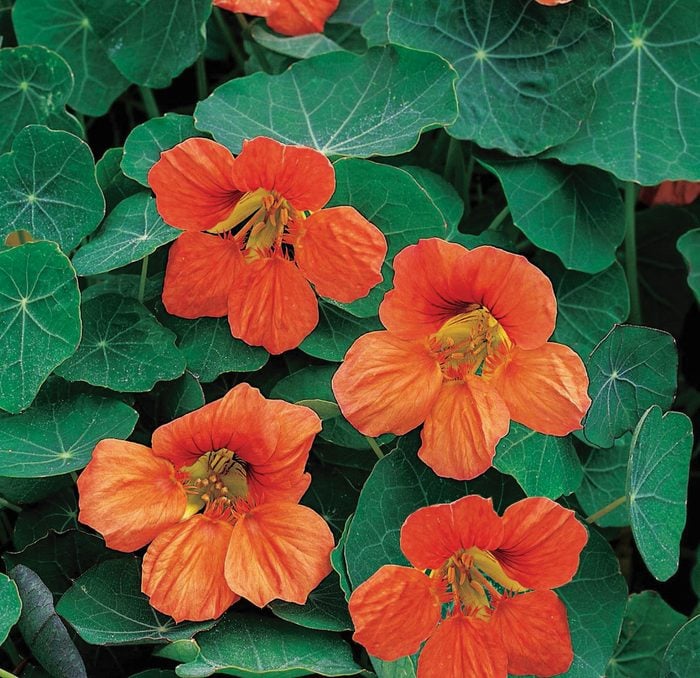
Nasturtium
Humans aren’t the only ones who enjoy nasturtiums: Moth and butterfly caterpillars like to munch on the leaves, as do some songbirds. The nectar attracts many types of fliers. Once it’s established, nasturtium contributes vivid color all season long. It’s easy to care for with regular watering. Some types grow in mounds, while others are good climbers.
Why we love it: The edible flower makes a zesty, colorful addition to a green salad.
Psst—hummingbirds love these pink nasturtium flowers.
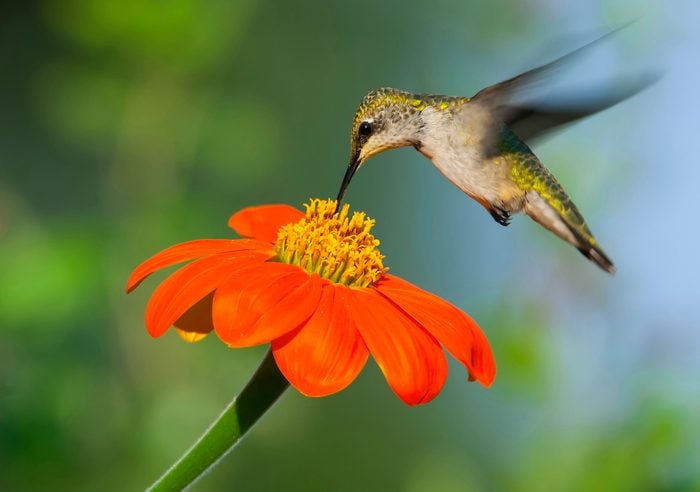
Mexican Sunflower
This fast-growing annual, which blooms in late summer and autumn, reaches 6 feet in height. Its long-lasting orange and red flowers glow in full sun. Resist the urge to deadhead—backyard songbirds enjoy the seeds.
Why we love it: Mexican sunflower is a pollinator magnet! Bumblebees, honey bees, swallowtails, fritillaries, skippers and more will stop by for a nectar snack.
These are the top 15 colorful hummingbird flowers to grow.
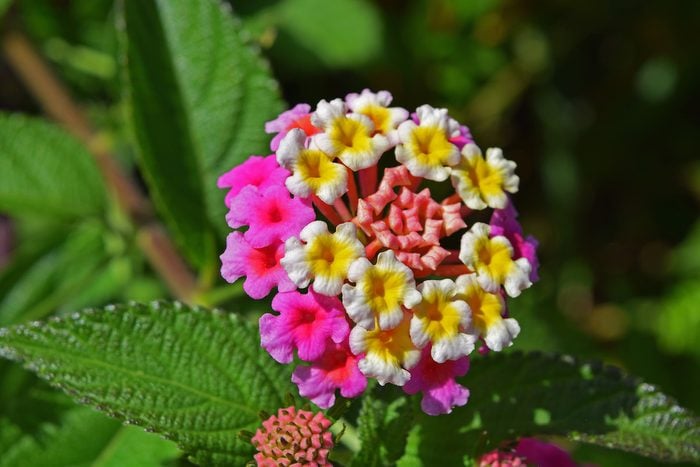
Lantana
With profuse tiny flowers, there’s plenty of nectar for both hummingbirds and butterflies. Smaller varieties with a mounding or trailing habit work well in containers. If you live in a tropical climate or Zones 8 to 11, try lantana as a shrub or a perennial.
Why we love it: Songbirds nibble on black berries later in the growing season.
Hummingbirds will flock to a hummingbird mint plant.
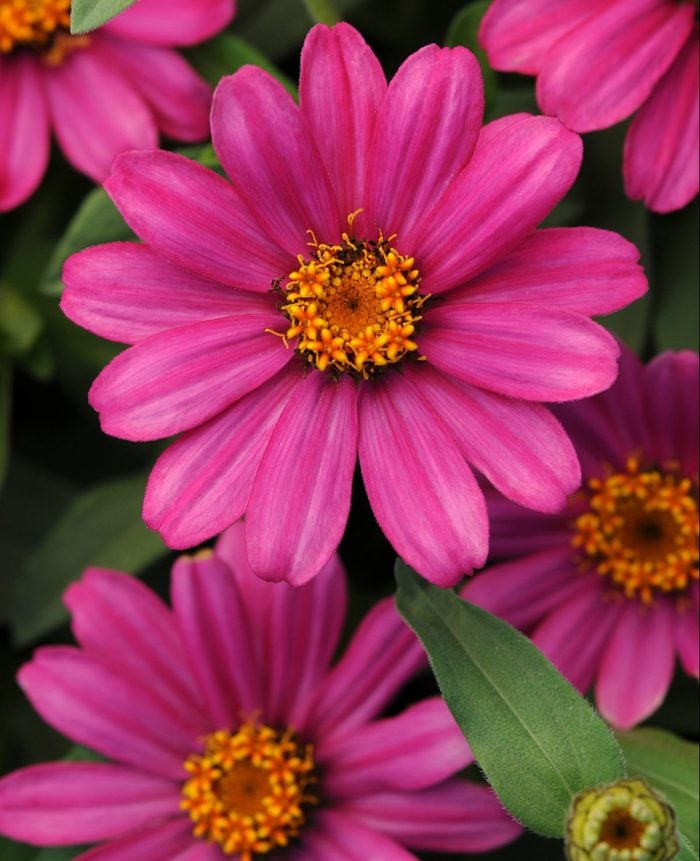
Zinnia
Nectar-filled zinnias come in a broad range of colors, heights and flower size, and they are a cheerful addition to any backyard. Incredibly easy to grow from seed, sun-loving zinnias bloom quickly. Seek out mildew-resistant varieties if mildew disease is a problem in your area.
Why we love it: A hummingbird and butterfly favorite, this versatile plant also has seed heads that attract several varieties of sparrows, finches and juncos.
The zinnia profusion series will fill your garden with color.
